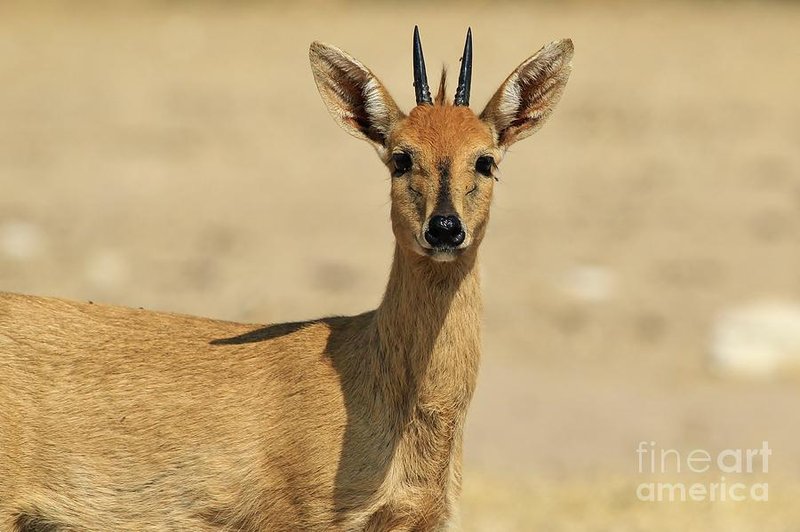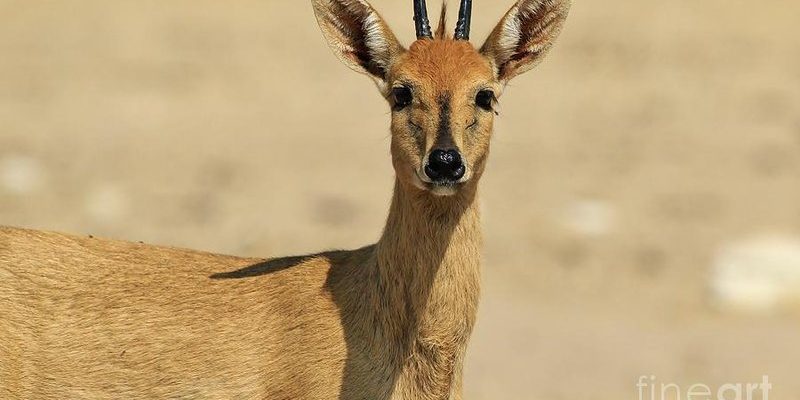
Imagine a graceful little creature that darts through the lush undergrowth of African forests, its delicate frame barely making a sound as it moves. This is the duiker, a small, nimble antelope that is both elusive and fascinating. The name “duiker” comes from the Afrikaans word for “diver,” which perfectly captures the way these animals vanish into thick vegetation when startled. With their big eyes and keen senses, duikers are like nature’s secret agents, blending into their surroundings while staying alert to any potential danger.
You might be wondering what makes duikers so special. They play a vital role in their ecosystem by helping to control plant growth and dispersing seeds as they feast on fruits and foliage. While they might be small, their impact on the environment is anything but insignificant. In this article, we’ll dive deep into the world of duikers, exploring their characteristics, behavior, and habitat.
Physical Characteristics of Duikers
Duikers are not your average antelope. These creatures are compact, with a size that typically ranges from about 2 to 3.5 feet tall at the shoulder. But don’t let their small stature fool you; they possess impressive agility and speed. Their bodies are built for quick bursts of movement, making them adept at escaping from predators. All duikers share common traits, such as long legs, rounded bodies, and a short tail, which help them navigate through dense brush effortlessly.
In terms of coloration, most duikers have a rich brown or grayish fur, providing excellent camouflage in their forested habitats. The females are slightly larger than the males and usually lack the prominent horns that male duikers possess. These horns can be quite impressive, curving backward and adding to the male’s overall striking appearance.
One standout feature of duikers is their unique facial markings, which vary among species. Some have white or cream-colored markings that make them even more picturesque, almost like nature’s artwork. The different species of duikers also showcase varying sizes and features, but they all share the same charming essence.
Habitat and Distribution
Duikers are primarily found in the dense forests of Sub-Saharan Africa, where they thrive in a variety of environments. They prefer areas with thick underbrush, as it offers both refuge from predators and plenty of food sources. These little antelopes are often spotted in rainforests, woodlands, and even savannahs, depending on the specific species. This adaptability is a key factor in their survival.
Some species, like the common duiker, have a broader range and can be found in varied habitats. On the other hand, certain specific types are more specialized, residing only in particular regions. For instance, the blue duiker is typically associated with coastal forests, while others might favor inland areas. This habitat diversity allows different duiker species to coexist within the same broader ecosystem.
Interestingly, duikers are known for their tendency to live alone or in small groups. This solitary behavior is partly due to their shyness; they are not the type to hang around in large herds like other antelope species. Instead, you can often spot them grazing quietly, blending into their surroundings, which helps them avoid detection by predators like leopards and hyenas.
Diet and Feeding Habits
When it comes to food, duikers are herbivores that primarily feed on leaves, fruits, and flowers. Their diet varies based on their habitat and the available vegetation, but they are particularly fond of browsing on shrubs and small trees. Duikers are skilled foragers, using their keen sense of smell to locate ripe fruits hidden among the foliage.
One interesting aspect of their feeding behavior is their selective eating habits. Duikers often target specific plants, allowing them to maintain a balanced diet while avoiding toxic or low-nutrition species. This selectivity helps them stay healthy and thrive in their environments. They typically feed in the early morning or late afternoon, taking advantage of cooler temperatures and reducing their risk of encountering predators.
Another fascinating feature of duikers is their ability to consume fruits and seeds, which contributes to seed dispersal in their habitats. As they digest these foods, duikers help propagate various plant species, playing a crucial role in maintaining the ecosystem. So, the next time you think of these little antelopes, remember they are not just cute; they are vital to their environment.
Behavior and Social Structure
Duikers are fascinating creatures when it comes to their social behavior. Generally, they prefer solitude or small groupings, often consisting of a mother and her offspring. This solitary lifestyle makes them interesting, as they are more inclined to rely on their instincts and senses to survive. You might see them quickly bounce away at the slightest noise or movement, showcasing their impressive agility.
When duikers do come together, it is usually for mating purposes or a mother caring for her young. Their young are precociously mature, able to walk shortly after birth, which is crucial for survival in the wild. The mothers are highly protective, often hiding their young in dense undergrowth while they go foraging. This strategy helps to keep baby duikers safe from potential predators.
In addition to their alertness, duikers are also known for their vocalizations. They make a variety of sounds, including soft bleats and grunts, which can communicate distress or contentment. These sounds can often be heard echoing through the forest, reminding us that even in solitude, they have their ways of connecting with one another.
Reproduction and Lifespan
Duikers have a unique reproductive cycle. Generally, females reach sexual maturity between six months to a year old, and they become pregnant after a brief gestation period of about seven months. Typically, the female gives birth to a single calf, although twins can occur in rare instances. After birth, the mother will hide the calf in thick cover for safety while she forages for food.
The bond between a mother duiker and her young is strong; she will care for her calf diligently, providing nourishment and protection. Young duikers rely on their mother’s milk for several months before gradually transitioning to solid food. As they grow, they learn essential survival skills, such as foraging and evading predators, which are vital for their future independence.
In terms of lifespan, duikers can live for about 10 to 15 years in the wild, although various factors, such as habitat conditions and predation, can influence this. In captivity, they may enjoy even longer lives due to the absence of natural threats and regular access to food. Regardless of their environment, duikers exhibit remarkable resilience and adaptability, which contributes to their survival.
Conservation Status
The conservation status of duikers varies among species, with some classified as least concern while others face significant threats. Habitat destruction due to deforestation, poaching, and human encroachment are pressing issues that pose a risk to their populations. Many duiker species are particularly sensitive to changes in their environment, making them vulnerable to extinction.
Conservation efforts are underway in many regions, focusing on habitat preservation and protection from poaching. National parks and reserves serve as safe havens for these animals, allowing populations to thrive without the pressures of human activity. Local communities are also often involved in conservation initiatives, raising awareness about the importance of protecting these unique animals.
Monitoring populations and conducting research are integral to understanding how best to support duikers in their natural habitats. As we learn more about these fascinating creatures, it becomes crucial to advocate for their protection and promote sustainable practices that ensure their survival for generations to come.
Interesting Facts About Duikers
| Species: | Multiple species, including Common Duiker, Blue Duiker, and Red Duiker |
| Size: | 2 to 3.5 feet tall at the shoulder |
| Diet: | Herbivore; feeds on leaves, fruits, and flowers |
| Habitat: | Sub-Saharan Africa; prefers dense forests, woodlands, and savannahs |
| Lifespan: | 10 to 15 years in the wild |
| Social Structure: | Generally solitary or in small groups |
FAQ
What are the main threats to duikers?
Duikers face several threats, with habitat loss being the most critical. Deforestation and land conversion for agriculture reduce their natural habitat, making it challenging for them to find food and shelter. Additionally, poaching for bushmeat poses a significant risk to their populations. Efforts to combat these issues include habitat restoration and community engagement in conservation.
How fast can duikers run?
Duikers are surprisingly fast for their size. They can reach speeds of up to 30 miles per hour in short bursts. This speed is crucial for escaping predators like leopards and hyenas. Their agility allows them to navigate through thick underbrush quickly, which can mean the difference between life and death in the wild.
What is the difference between male and female duikers?
One of the most noticeable differences between male and female duikers is the presence of horns. Males typically have curved horns, while females do not. Additionally, females are generally larger and more robust than males. Behavioral differences also arise when it comes to rearing young, as mothers are highly protective of their calves.
Are duikers social animals?
Duikers are primarily solitary creatures. They tend to be shy and prefer to live alone or in small family groups. While they may come together during mating seasons or when mothers care for their young, otherwise, they keep to themselves. This solitary nature is part of what makes them so elusive in their forest habitats.
What do duikers do to escape predators?
When faced with danger, duikers rely on their agility and speed to escape. They employ a tactic called “zig-zag running,” which makes it harder for predators to catch them. Additionally, their natural camouflage helps them blend into their surroundings, allowing them to hide until the threat passes.
How do duikers communicate with each other?
Duikers communicate through vocalizations, body language, and scent marking. They make soft bleats or grunts to express different emotions or alert others to potential dangers. Scent marking is also crucial, as they leave their scent on vegetation to communicate their presence to other duikers.
Can duikers be kept as pets?
Duikers are wild animals and are not suitable as pets. They have specialized dietary and space needs that are often impossible to meet in a domestic setting. Moreover, they have natural instincts that make them challenging to care for in captivity. It’s essential to support their conservation in the wild rather than attempt to domesticate them.
What is the lifespan of a duiker in captivity?
In captivity, duikers can live longer than those in the wild, often reaching 15 to 20 years. The absence of natural predators and regular access to food contribute to this extended lifespan. However, it’s essential that captive environments replicate their natural habitats as closely as possible to maintain their well-being.
Are all duiker species endangered?
No, not all duiker species are endangered. While some species, like the blue duiker, are considered vulnerable due to habitat loss and poaching, others have stable populations. Each species has its own conservation status, which reflects its current population dynamics and the threats it faces.
How can I help protect duikers?
You can help protect duikers by supporting conservation organizations that focus on wildlife preservation and habitat restoration. Raising awareness about the importance of protecting these animals and their habitats is also crucial. Simple actions, like advocating against deforestation and sustainable consumption, can positively contribute to their survival.
What is the most common species of duiker?
The common duiker is one of the most widely recognized and encountered species of duiker. It is found throughout many regions of Sub-Saharan Africa and is adaptable in various habitats. This adaptability has contributed to its prevalence amidst the diversity of duiker species.

